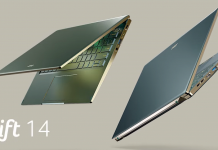Last updated on December 8th, 2022 at 02:21 pm
By the close of trading, Intel shares exacerbated the depreciation to 16%
Immediately after the publication of Intel’s quarterly report, the company’s stock price fell by 9%, but by the evening the drop had worsened to 16%. AMD shares all this time moved mirrored upward, they ended Friday with a 16% rise. TSMC also won, while shares of Intel suppliers were expected to fall in price.
Don’t forget to leave us a comment below and let us know what you think!
Share Our Website for Technology News , Health News , Latest Smartphones , Mobiles , Games , LifeStyle , USA News & Much more...





